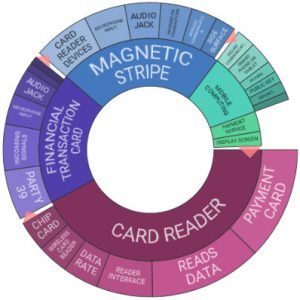In late August, San Francisco, CA-based merchant services company Square, Inc. (NYSE:SQ) announced that it had entered into business partnerships with a pair of former competitors. The payment transaction hardware produced by Square will be made compatible with software developed by point-of-sale (POS) system developers TouchBistro, headquartered in New York City, and New Zealand-based Vend. TouchBistro is used in iPad POS systems at restaurants in 37 countries, while Vend is used in POS systems at 15,000 retail stores in 140 countries.
These partnerships are the latest moves Square has made in order to develop a more open system for its transaction services. The company began an expansion into online lending services this March when it announced a partnership with Celtic Bank in Utah. Reports from The Wall Street Journal indicated that Square began offering cash advances to small businesses using Square technology which can be repaid in less than a year by Square taking a small cut of each transaction made at the store. In early August, Square inked a partnership with Providence, RI-based UpServe to offer loans to restaurants using UpServe’s POS and data analytics services. Both lending partnerships are backed by Square’s licensing arm, Square Capital.
 Square holds a total portfolio of 134 active U.S. patents according to the patent portfolio analysis tools available through Innography. The company has been issued 36 U.S. patents since the beginning of 2016. A great deal of Square’s research and development has focused upon card readers but there seems to be a good deal of R&D investment related to financial transaction cards and magnetic strips. A few of Square’s recently issued patents include:
Square holds a total portfolio of 134 active U.S. patents according to the patent portfolio analysis tools available through Innography. The company has been issued 36 U.S. patents since the beginning of 2016. A great deal of Square’s research and development has focused upon card readers but there seems to be a good deal of R&D investment related to financial transaction cards and magnetic strips. A few of Square’s recently issued patents include:
- U.S. Patent No. 9424445, titled Card Reader Having Discriminator Effect. This patent protects a card reader for a POS system which can accept both magnetic strip-type and integrated chip-type payment cards. A discriminator contact included in the circuitry provides early detection of the card type to provide a graphical user interface appropriate for either strip-type or chip-type cards.
- U.S. Patent No. 9378491, entitled Payment Transfer by Sending E-mail. This discloses a computer-implemented method which enables the seamless initiation of a payment transfer through e-mail from one mobile device to another without creating an account or logging into a service. The innovative system is designed for both simplicity of use as well as security and authentication in online financial transactions.
- U.S. Patent No. 9412100, which is titled Physical Currency Management. It claims a POS device for receiving payment for a cost of a transaction. The invention is designed to improve the management of physical currencies for merchants by providing a device capable of accepting physical currency, storing that currency and automatically determining the amount of physical currency stored. The patent also discusses the use of a courier which can transfer physical currency to and from a bank.
At this point, those with a knowledge of how recent decisions by the U.S. Supreme Court has altered the U.S. patent landscape in recent years are likely noticing something unusual. SCOTUS handed down a June 2014 decision in Alice Corporation v. CLS Bank International which has had a deleterious effect on computer-implemented method and software patents. The court held that a patent protecting a method for exchanging financial obligations, a computer system as a third-party intermediary and program code for performing the method of exchanging obligations as patent ineligible under 35 U.S.C. § 101, the broadest possible definition for declaring subject matter as patent ineligible.
Given this fact, it seems at least somewhat unusual at first that Square would be issued a patent such as the ‘491 patent discussed above. Indeed, a system of transferring payments through e-mail seems incredibly similar to the system of exchanging financial obligations protected by the patent invalidated by SCOTUS.
A final rejection issued by a patent examiner on the ‘491 patent dated December 8th, 2014, doesn’t specifically mention Alice v. CLS, but the case’s effect on the examiner’s decision seemed evident. The examiner sought to eliminate claims 1 through 30 of the ‘491 patent as ineligible subject matter under § 101 and does not satisfy the Supreme Court’s two-step analysis regarding the eligibility of seemingly abstract subject matter. “Furthermore, performing a money transfer has long been in the industry in which people exchange for goods, services or other reasons, thus concluding a fundamental economic practice,” the final rejection reads. “Additionally, the steps of the claim could be performed through the use of organized human activities given enough time.”
In arguments made in response to the final rejection, Square’s prosecution team on the ‘491 patent noted that it had amended the claims to make the patentable features of those claims more explicit. Furthermore, counsel argued that the claim was not “wholly directed” to an abstract idea, specifically citing claim 1 reciting the use of a payment application system on a sender’s mobile device and the determination of a recipient’s financial account, directing claim 1 to much more narrow subject matter than simply performing an exchange of money. The ‘491 was issued to Square in late June of this year.
Square released its earnings report for the second quarter of 2016 on August 3rd. Revenue was up sharply for the company, taking in a total net revenue of $438.5 million compared to the $310 million taken in during the three months prior to June 30th, 2015, about five months before Square went public last November. The company’s most profitable division was revenue from transactions, which brought in $364.8 million in the recent quarter. This doesn’t include revenue on transactions from Seattle, WA-based Starbucks Corporation (NYSE:SBUX), which was $32.8 million on the quarter. Square also earns revenues from sales of hardware as well as software and data product services.
Despite this jump in revenue, increased costs for revenue and operating expenses actually led to a net loss in Square’s 2016 second quarter. It’s net losses of $27.3 million on the quarter are slightly less than the $28.5 million net loss seen in the same three-month period last year. A $69 million year-over-year increase in transaction costs, as well as a $57.9 million increase in total operating expenses, helped to wipe out much of Square’s revenue gains. Despite the loss, shares of Square popped by 17 percent in the day after the earnings report came out because earnings per share only fell by 8 cents per share instead of 11 cents per share which was expected by analysts.

![[IPWatchdog Logo]](https://ipwatchdog.com/wp-content/themes/IPWatchdog%20-%202023/assets/images/temp/logo-small@2x.png)


![[[Advertisement]]](https://ipwatchdog.com/wp-content/uploads/2023/01/2021-Patent-Practice-on-Demand-1.png)
![[Advertisement]](https://ipwatchdog.com/wp-content/uploads/2024/05/Quartz-IP-May-9-2024-sidebar-700x500-1.jpg)
![[Advertisement]](https://ipwatchdog.com/wp-content/uploads/2024/04/Patent-Litigation-Masters-2024-sidebar-700x500-1.jpg)

![[Advertisement]](https://ipwatchdog.com/wp-content/uploads/2021/12/WEBINAR-336-x-280-px.png)
![[Advertisement]](https://ipwatchdog.com/wp-content/uploads/2021/12/2021-Patent-Practice-on-Demand-recorded-Feb-2021-336-x-280.jpg)
![[Advertisement]](https://ipwatchdog.com/wp-content/uploads/2021/12/Ad-4-The-Invent-Patent-System™.png)






Join the Discussion
One comment so far.
James
September 19, 2016 09:37 amSquare fought off an Alice rejection of the examiner. It may be a much different story at the PTAB or in the federal courts.